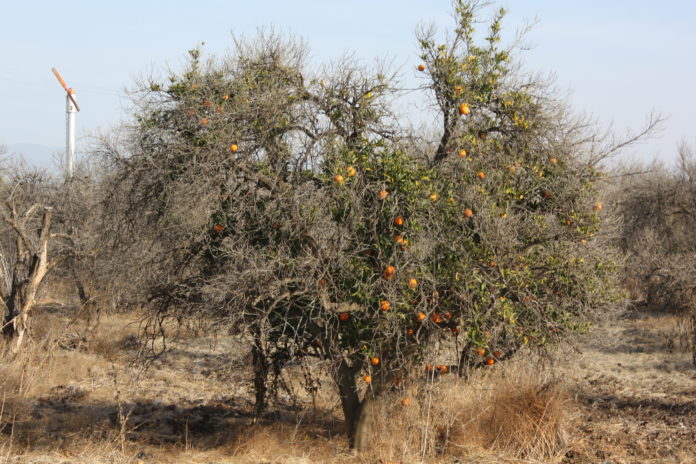By Dr. Edward T. Henry, DVM (retired)
Since I have an overabundance of time on my hands (which can be a little scary) with this Wuhan China (Corona, COVID-19) virus situation, I thought I’d pursue some thoughts regarding one of the Sustainability Indicators and its Undesirable Results.
In the November 2017 Best Management Practices for the Sustainable Management of Groundwater, Sustainable Management Criteria, BMP document starting on Page 4, it lists the six Sustainability Indicators and the Undesirable Results of groundwater overdraft. Listed first is the chronic lowering of groundwater levels. (NOTE: also see the same wording as below in the Sustainable Groundwater Management Act [And Related Statutory Provisions from SB1168 (Pavley), AB 1739 (Dickinson), and SB 1319 (Pavley) as Chaptered], CHAPTER 2. Definitions; 10721. DEFINITIONS (x)(1) “Chronic lowering of groundwater levels…” on Page 17).
It states on Page 4 of the BMP: “Chronic lowering of groundwater levels indicating a significant and unreasonable depletion of supply if continued over the planning and implementation horizon. (Then it goes on to state) Overdraft during a period of drought is not sufficient to establish a chronic lowering of groundwater levels if extractions and groundwater recharge are managed as necessary to ensure that reductions in groundwater levels or storage during a period of drought are offset by increases in groundwater levels or storage during other periods.” This second part of this Undesirable Results has often confounded me somewhat, and when I’ve brought it up at various “water” meetings no one wants to delve into just how important that verbiage is. Although in some ways, I feel that wording should be stricken as I think there will be legal challenges as to how groundwater can and will be utilized during official drought periods due specifically to that wording.
Who officially declares a drought? What is/are the criteria for an official drought? What California state agency or is it the Governor? When does the start date of an official drought begin? And what constitutes the end of an officially declared drought? Many feel the San Joaquin Valley is in a constant “functional and political” drought with regards to water policy. https://www.drought.gov/drought/states/california.
But during that official period of drought the other three Undesirable Results (at least for the MKGSA) will continue to occur as they do not know the difference between a drought and a no-drought situation. Those three Undesirable Results are: (1) Significant and unreasonable reduction of groundwater storage; (2) Significant and unreasonable land subsidence that substantially interferes with surface land uses; and (3) Significant and unreasonable degraded water quality, including the migration of contaminant plumes that impair water supplies.
Let’s go back to the second sentence of that Undesirable Results which states in part “Overdraft during a period of drought is not sufficient to establish a chronic lowering of groundwater…”, and yet chronic lowering of groundwater is an Undesirable Results, but not in a drought. This is a very interesting clarifier sentence of this Undesirable Results which gives Groundwater Sustainability Agencies (GSAs) some definite “wiggle room” in that once a drought is officially declared then overdrafting is allowed because it is “…not sufficient to establish a chronic lowering of groundwater…”, and as a result of that allowed overdrafting land fallowing could, most likely, be suspended temporarily also? In other words, land that would be destined for fallowing without a drought wouldn’t have to be fallowed during a drought because it’s not considered or classified as “overdraft”? (see Dr. David Sunding’s EIA Report on land retirement—with or without a drought). The period of drought wording, to me, is an “escape clause” to allow overdrafting but it’s not really overdrafting because there’s a drought!! And yet the other Undesirable Results will continue as if there were no SGMA at all with land subsidence probably being the worst second only to chronic lowering of groundwater. SGMA is supposed to stop overdrafting but a drought allows overdrafting. Would the Sustainable Yield (SY) during a drought be suspended—because as stated, “Overdraft during a period of drought is not sufficient to establish a chronic lowering of groundwater levels…”? The SY is supposedly that amount of groundwater extraction which will not cause any of the six Undesirable Results.
Once the drought is declared over, then the overdrafted groundwater is required to be replenished, “…groundwater levels or storage during a period of drought are offset by increases in groundwater levels or storage during other periods.”, and that could be very problematic. So would land fallowing during an official drought be suspended? Then once the official drought is over, land fallowing would need to be restarted and maximized in order to meet the replenishing requirements of the sentence above.
The fastest way to raise groundwater levels is to severely restrict groundwater pumping, and if there’s restricted groundwater pumping as per SGMA (no drought) and not enough surface water to meet crop demands, then land fallowing is a given. Yes, the recharge process of the aquifers is effective and very important but it’s generally a very slow process—we pump groundwater in gallons per minute but recharge is in gallons per year(s).
Dr. Edward T. Henry is a large animal veterinarian from Tulare County and sits on the Mid Kaweah GSA Advisory Board.






























